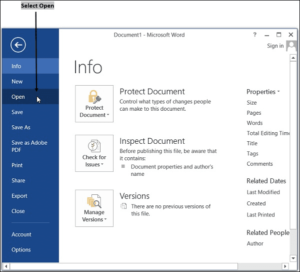Lobby- A lobby typically refers to a space or area within a building, such as a hotel, office building, or apartment complex, where people gather or wait. Lobbies are often located near the main entrance and serve as a transitional space between the exterior and interior of the building. They can have various functions, including:
- Reception: Many lobbies have a reception desk or area where visitors can check in or receive information about the building’s services or facilities.
- Waiting Area: Lobbies often include seating areas where people can wait for appointments, meetings, or transportation.
- Security: In some buildings, lobbies may serve as security checkpoints, where visitors are screened or monitored before gaining access to the rest of the facility.
- Information Center: Lobbies can provide information about the building or its surroundings, including maps, brochures, and directories.
- Aesthetic and Branding: Lobbies are also designed to create a positive first impression and convey the building’s or company’s branding through interior design, decor, and signage.
- Transit Hubs: In transportation facilities, such as airports or train stations, a lobby can be a space where passengers wait for their transportation and access ticketing or other services.
The specific purpose and design of a lobby can vary greatly depending on the type of building and its intended use. In general, lobbies are intended to be welcoming and functional spaces that facilitate movement and interaction within a building.
What is Lobby
The term “lobby” can have several different meanings depending on the context. Here are a few common interpretations:
- A Building’s Entrance or Reception Area: In architectural and building terms, a lobby refers to the space just inside the main entrance of a building. It often serves as a transitional area between the exterior and interior of the building. In this context, a lobby can include features like a reception desk, waiting areas, and sometimes an information or security desk.
- A Foyer or Entrance Hall: In a residential context, a lobby can refer to the entrance hall of a house or apartment. It’s the area where people enter when they first come inside the home. It can serve as a welcoming space and may include hooks for coats, a shoe rack, or a place to greet guests.
- A Group Advocating for a Particular Cause: In a political or advocacy context, a lobby can refer to a group or organization that aims to influence lawmakers and government officials to support a particular policy or cause. These organizations engage in lobbying activities, such as meeting with legislators, organizing campaigns, and advocating for their interests.
- A Verb Meaning to Attempt to Influence or Persuade: “Lobby” can also be used as a verb, meaning to attempt to influence or persuade someone, typically a person in authority, in support of a particular cause or issue. For example, someone might say, “The environmental organization lobbied for stricter pollution regulations.”
The meaning of “lobby” depends on the context in which it is used.
Who is Required Lobby
The term “Lobby” by itself doesn’t refer to a specific person or entity. It’s a general term that can have several different meanings, as mentioned in previous responses.
In the context of advocacy or politics, “lobby” usually refers to individuals or groups who engage in lobbying activities to influence government officials or lawmakers to support a particular policy, cause, or interest. For example, environmental organizations, trade associations, or interest groups may have lobbyists who work to promote their agenda.
If you have a specific question about a person or organization related to lobbying, please provide more context, and I’ll do my best to assist you further.
When is Required Lobby

It seems like you might be looking for information on when lobbying activities occur or under what circumstances. Lobbying is the act of trying to influence government officials or lawmakers on specific issues, policies, or legislation. Lobbying can happen at various times and in different situations, depending on the goals and interests of those involved. Here are some common situations when lobbying occurs:
- During Legislative Sessions: Lobbying often takes place when legislative bodies, such as city councils, state legislatures, or the U.S. Congress, are in session. Lobbyists may engage with lawmakers to advocate for or against proposed bills and policies.
- Election Campaigns: Lobbying can be active during election campaigns, where interest groups and political action committees (PACs) may support candidates who align with their views or promote specific issues.
- Regulatory Processes: Lobbying can occur when government agencies are developing or revising regulations. Interest groups and businesses may seek to influence these regulations to serve their interests.
- In Response to Crises or Issues: Lobbying can also happen in response to specific events or crises, such as public health emergencies or environmental disasters, where policies or funding may be adjusted.
- Budgetary Processes: Advocacy groups may engage in lobbying when government budgets are being determined, seeking funding for particular programs or projects.
- Ongoing Advocacy: Some lobbying is continuous and not tied to specific events. Advocacy organizations may work year-round to influence public opinion and government decisions on issues they care about.
Lobbying can be a year-round activity, and it can occur at various levels of government and in response to a wide range of issues. The timing and frequency of lobbying efforts depend on the nature of the issues and the legislative or regulatory processes involved.
Where is Required Lobby
A “lobby” can refer to different things depending on the context:
- Building Entrance: In architecture and building design, a lobby is the area just inside the main entrance of a building. It often serves as a transition space between the exterior and interior of the building. In this context, a lobby is located within the building, typically near the main entrance.
- Residential Entrance: In residential contexts, a lobby can refer to the entrance hall of a house or apartment building, serving as the area where people enter when they first come inside the home or building.
- Advocacy or Politics: In the context of advocacy or politics, “lobbying” refers to efforts to influence government officials. These activities can occur in various places, including government offices, legislative chambers, or even online through communications with lawmakers.
If you have a specific location or context in mind, please provide more information, and I’ll do my best to offer a more precise response.
Case Study on Lobby
Title: “The Clean Energy Advocacy Campaign”
Introduction: In this case study, we examine the lobbying efforts of a clean energy advocacy group, the Clean Energy Alliance (CEA). The CEA is a nonprofit organization focused on promoting renewable energy sources, reducing carbon emissions, and influencing government policies to address climate change.
Background: The CEA was established in 2010 with the goal of advancing clean energy initiatives. The organization’s mission is to encourage the transition to a sustainable energy future by promoting renewable technologies, energy efficiency, and green policies.
Challenges: The CEA faced several challenges:
- Political Opposition: The group encountered resistance from lawmakers who were skeptical about the economic viability of clean energy and reluctant to enact regulations favoring renewable sources.
- Public Awareness: Many citizens were unaware of the benefits of clean energy and remained unconvinced about its importance.
Lobbying Strategy: The CEA adopted a multi-faceted lobbying strategy to address these challenges:
- Legislative Advocacy: The organization engaged in direct lobbying efforts by meeting with legislators and presenting data, research, and case studies on the economic and environmental benefits of clean energy.
- Grassroots Mobilization: The CEA launched a grassroots campaign to raise public awareness and encourage citizens to support clean energy initiatives. This included public rallies, social media campaigns, and petitions.
- Coalition Building: The organization formed partnerships with other environmental and renewable energy advocacy groups to amplify their lobbying efforts and create a united front.
Results: Over several years, the CEA’s lobbying efforts achieved several notable outcomes:
- Legislation: The CEA successfully lobbied for the passage of legislation that provided tax incentives for renewable energy projects, making them more financially appealing to businesses and homeowners.
- Public Support: Public awareness campaigns led to increased support for clean energy initiatives, resulting in greater political pressure on lawmakers to enact favorable policies.
- Coalition Success: Collaborative efforts with other advocacy groups increased the overall impact of their lobbying campaigns and contributed to a more significant shift in public and legislative support for clean energy.
Lessons Learned: The case of the Clean Energy Alliance illustrates the effectiveness of a well-structured lobbying strategy that combines direct advocacy with grassroots mobilization and coalition building. It highlights the importance of both public and political support in achieving lobbying goals, especially in fields with significant opposition.
This case study demonstrates how lobbying efforts can lead to changes in legislation and public perception, ultimately advancing a specific cause or issue.
White paper on Lobby
Title: Understanding Lobbying: Influence, Advocacy, and Governance
Table of Contents:
- Executive Summary
- Brief overview of the white paper’s main points and findings.
- Introduction
- Definition of lobbying
- The importance of understanding lobbying
- Purpose and scope of the white paper
- What is Lobbying?
- Detailed explanation of lobbying and its various forms
- Historical context and evolution of lobbying
- Lobbying in Government
- The role of lobbying in democratic societies
- Key actors in the lobbying process (lobbyists, interest groups, corporations, etc.)
- Laws and regulations governing lobbying (varies by country)
- Lobbying Strategies
- Different lobbying techniques and tactics
- Examples of successful lobbying campaigns
- The Influence of Lobbying
- The impact of lobbying on policy decisions
- Case studies of lobbying success and failure
- Transparency and Ethics
- Discussion of transparency and disclosure requirements
- Ethical considerations in lobbying
- Challenges and Criticisms
- Common criticisms of lobbying
- Issues related to the influence of money in politics
- Regulatory challenges
- International Comparisons
- A look at lobbying practices in various countries
- Contrasts between lobbying in democracies and other political systems
- Public Perception of Lobbying
- Public opinion on lobbying
- The media’s role in shaping public perception
- Reforms and Best Practices
- Proposed or enacted lobbying reforms
- Best practices for ethical and effective lobbying
- The Future of Lobbying
- Emerging trends in lobbying
- Technological advancements and their impact on lobbying
- Conclusion
- Summarizing key takeaways
- The evolving role of lobbying in modern governance
- References
- Citations and sources used in the white paper
Appendices (if necessary):
- Glossary of terms
- Additional resources
- Legal documents and regulations related to lobbying
Disclaimer: Include a disclaimer to clarify that the information provided in the white paper is for informational purposes and should not be considered legal advice.
Writing a white paper on lobbying is a significant undertaking, and you should conduct thorough research and ensure that the information presented is accurate and up-to-date. It’s important to maintain a neutral and balanced tone throughout the paper, addressing both the positive and negative aspects of lobbying as a subject.
Industrial Application of Lobby
The term “lobby” is typically associated with activities related to influencing government officials, advocating for policies, or representing interests. However, in an industrial context, “lobby” may not be a common term, but the concept of advocacy and representation can be relevant. Here are some industrial applications where advocacy, lobbying, or representation play a significant role:
- Trade Associations: Trade associations are industry-specific organizations that represent the collective interests of businesses within a particular sector. They often engage in lobbying efforts to advocate for policies that benefit their members. For example, the American Petroleum Institute (API) represents the oil and gas industry.
- Regulatory Compliance: Industries subject to extensive government regulations may employ lobbying or advocacy to shape and influence those regulations. Companies within the pharmaceutical or food production sectors, for instance, may engage in regulatory lobbying to ensure their products meet industry standards.
- Energy and Environment: Companies operating in the energy and environmental sectors often engage in advocacy to promote their interests. They may lobby for favorable energy policies or regulations related to emissions and environmental impact.
- Manufacturing and Labor: Advocacy groups representing manufacturing industries may lobby for trade policies that benefit domestic manufacturing. Labor unions may also engage in lobbying to advocate for workers’ rights and labor-related policies.
- Technology and Innovation: The technology sector frequently engages in lobbying to advocate for policies that promote innovation, patent protection, and data privacy.
- Infrastructure Development: Companies involved in construction, engineering, or infrastructure development may lobby for government contracts, investment in public infrastructure, and favorable policies that encourage growth in these sectors.
- Agriculture: Agriculture associations and companies often engage in lobbying to influence policies related to farming subsidies, food safety regulations, and international trade agreements.
- Healthcare: Healthcare providers, pharmaceutical companies, and healthcare associations may engage in lobbying efforts to influence healthcare policy, regulations, and funding.
- Transportation: The transportation industry, including airlines, shipping companies, and automotive manufacturers, may lobby for policies related to safety regulations, fuel standards, and infrastructure funding.
- Finance and Banking: The financial sector may engage in lobbying to influence financial regulations, tax policies, and other matters that affect their industry.
In all these industrial applications, lobbying, advocacy, and representation play a role in shaping government policies and regulations that can have a significant impact on businesses and industries. Lobbying efforts are often used to promote favorable policies, seek regulatory changes, and ensure that the interests of a particular sector or industry are considered in the decision-making process.





